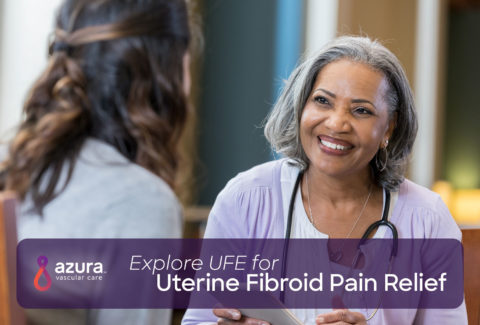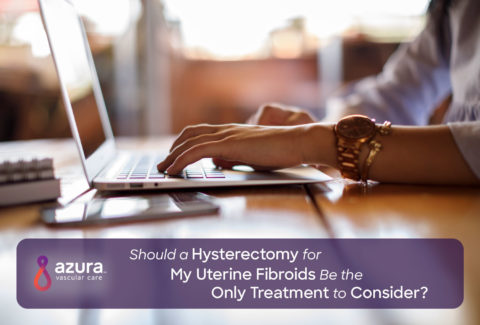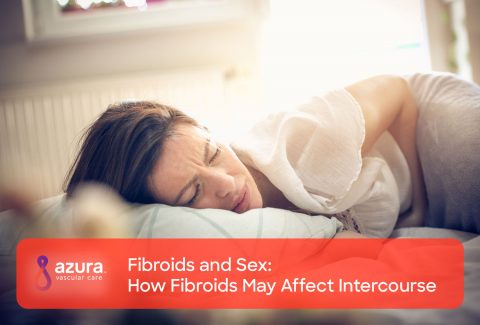
Are you considering surgery to remove uterine fibroids? There are two different surgeries available to remove these noncancerous uterine tumors: myomectomy, the removal of individual fibroids while leaving the uterus intact, and hysterectomy, the removal of the uterus, and potentially ovaries. Before you decide, you should learn more about uterine fibroid surgery, including the typical uterine fibroid surgery recovery time, advantages, and disadvantages.
The Types of Uterine Fibroid Removal Surgery
There are two types of uterine fibroid removal surgery:
- Myomectomy
- Hysterectomy
The Myomectomy Procedure
Myomectomy is performed only for the treatment of uterine fibroids. It may be chosen over hysterectomy because a woman:
- Hopes to have (more) children.
- Has uterine fibroids that are interfering with her ability to get pregnant.
- Wants to preserve her uterus.
What to Expect During The Procedure
Myomectomy can be performed as what’s known as an open procedure, through a large incision in the abdomen, through laparoscopy, which involves several small incisions and the use of a camera, or through hysteroscopy, a procedure where the fibroids are removed through your vagina and cervix.
What to Expect During Recovery
Myomectomy typically involves at least an overnight stay in the hospital. The number of days you spend in the hospital typically correlates to the approach used for the myomectomy. If you have the open procedure, the stay will be a few days, whereas with laparoscopy or hysteroscopy it may just be one night. You will require strong pain medication for at least 24 hours depending upon which type of myomectomy you have. You should expect vaginal spotting for up to 6 weeks and you cannot have sex or intercourse during recovery. The recovery time varies, depending upon the approach, anywhere from 2 – 6 weeks.
Complications After Myomectomy May Include:
- Bleeding, which is the most frequent complication.
- Scar tissue that can form from the incisions in the uterus.
- Scar tissue that develops outside the uterus as a result of the surgery.
- Potential for future problems with giving birth due to scar tissue within the uterus.
Advantages
- Fibroids are removed.
- The potential to have children, due to the uterus being preserved.
Disadvantages
- Fibroids can regrow.
- Not all fibroids may be able to be removed.
- Can have a long recovery period.
The Hysterectomy Procedure
In addition to treatment of uterine fibroids, hysterectomy is also performed for the treatment of:
- Cancer of the female organs.
- Endometriosis.
- Severe abnormal bleeding.
- Prolapse issues.
What to Expect During The Procedure
Hysterectomy can be performed through the vagina, through a large incision in the abdomen, or through laparoscopy. There are different types of hysterectomy:
- Total hysterectomy involves the removal of the uterus and the cervix.
- Supracervical hysterectomy involves removal of the upper part of the uterus, while the cervix is left in place.
- Radical hysterectomy involves total hysterectomy as well as removal of the structures around the uterus. This is most commonly performed when cancer is suspected or present.[v]
Other surgeries that may be performed at the same time of hysterectomy include:
- Salpingo-oopherectomy involves removal of the fallopian tubes and the ovaries.
- Oopherectomy involves removal of just the ovaries.
What to Expect During Recovery
Because hysterectomy is performed under general anesthesia, which makes the woman completely unconscious, the initial part of hysterectomy recovery is completed in the hospital. The typical hospital stay is 2-3 days. The pain is most intense during the first 2 – 3 days.[v] Constipation is common and is related to the surgery and pain medications. Vaginal bleeding is expected in the beginning and it can persist for up to 6 weeks. During this initial period, some women may have an emotional response to no longer being able to have children, while others may be happy to be free from the symptoms of uterine fibroids. The recovery is a full 6 weeks, including being off of work, and nothing should go in the vagina during that time.
Complications After Hysterectomy May Include:
- Infection.
- Blood clot that can start in the legs and travel to the lungs.
- Breathing problems related to anesthesia.
Advantages
- Uterine fibroids are gone and cannot come back.
Disadvantages
- Unable to get pregnant, due to removal of the uterus.
- Has the most surgical risk among all of the uterine fibroid treatments.[iv]
- Longest recovery time.
Related Article: Comparing Myomectomy, Hysterectomy and Uterine Fibroid Embolization
Keep in mind that surgery is not your only option to treat uterine fibroids, there is a minimally invasive procedure, uterine fibroid embolization, which is performed by vascular specialists. It’s important that you understand all your choices before deciding on treatment. The right procedure depends largely upon your past medical history and your goals. Your doctor can help you make the decision that’s right for you.
Sources:
i http://www.mayoclinic.org/tests-procedures/myomectomy/basics/why-its-done/prc-20012919?mc_id=google&campaign=318207679&geo=9019549&kw=myomectomy&ad=75571036639&network=g&sitetarget=&adgroup=20828273959&extension=&target=kwd-126736462&matchtype=p&device=c&account=9153355657&placementsite=minnesota&gclid=CNXttrS6u8kCFRCNaQodey8M1w
ii http://www.mayoclinic.org/tests-procedures/myomectomy/basics/what-you-can-expect/prc-20012919?mc_id=google&campaign=318207679&geo=9019549&kw=myomectomy&ad=75571036639&network=g&sitetarget=&adgroup=20828273959&extension=&target=kwd-126736462&matchtype=p&device=c&account=9153355657&placementsite=minnesota&gclid=CNXttrS6u8kCFRCNaQodey8M1w
iii Hurst, B.S., Matthews, M.., Marshburn, P.B., Laparoscopic myomectomy for symptomatic uterine myomas. Fertil and Steril, 2005. 83(1): p. 1-23.
iv Khan, A.T., Shehmar, M., and Gupta, J.K., Uterine fibroids: current perspectives. Int J Womens Health, 2014. 6: p. 95-114.
v http://www.acog.org/Patients/FAQs/Hysterectomy


